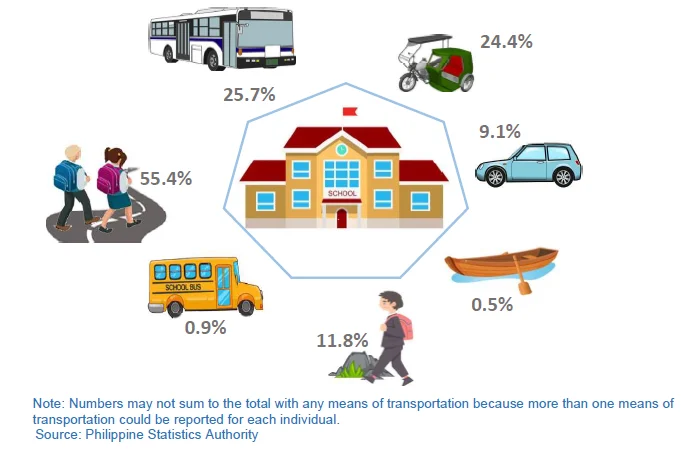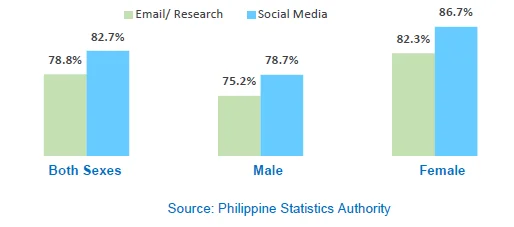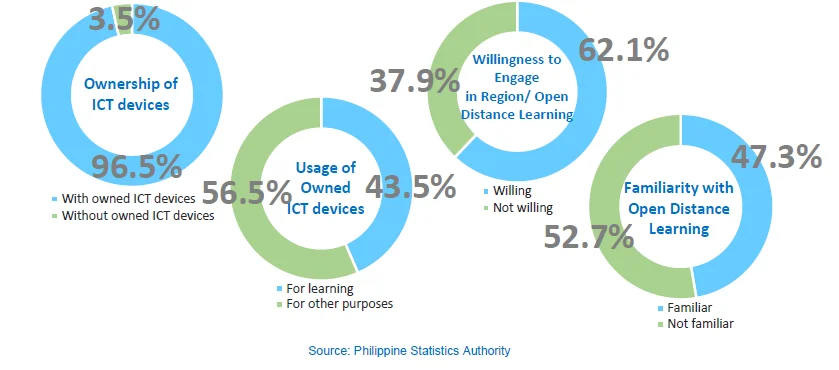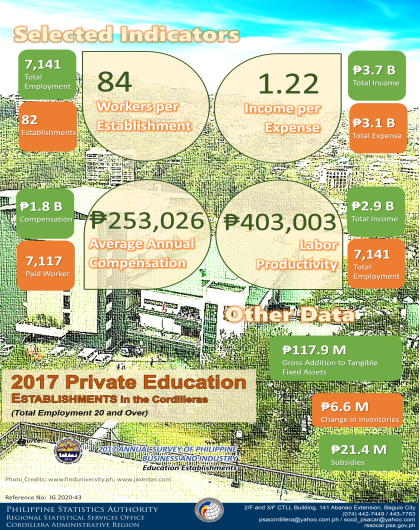The 2019 FLEMMS provides highlights on: 1.) the highest educational attainment and basic literacy status of the population 5 years old or over; 2.) functional literacy status of the population 10 to 64 years old; and .3) exposure to the different forms of mass media.
- Cordilleran 3 to 30 years old attending school in 2019 went to school mostly by walking although there is an existing transportation system in their area with 55.4 percent.
- About 25.7 percent rode the PUJ/FX/van/bus while 24.4 percent used tricycle/motorcycle/pedicab.
- Meanwhile, 11.8 percent of students walked to school due to the absence of any means of transportation.
- Those who went to school by riding private motor vehicles, school shuttle services, and banca/boat or other means comprised 9.1 percent, 0.9 percent, and 0.5 percent, respectively.
- Students who walked to school because of the absence of or without access to any means of transportation accounted for 11.8 percent in 2019. This slightly decreased from 12.2 percent in 2013.

Mass media is a medium of communication (such as newspapers, magazines, posters, signs, brochures and flyers, television, radio, movies, plays and similar shows, internet/e-mail, Facebook, Twitter, etc.) that is designed to reach the mass of the people.
In 2019, 96.5 percent of CAR households had access to ICT devices and used the different forms of mass media such as the newspaper, television, internet (for emails/research work), internet for social media, and radio. Meanwhile, only about 3.5 percent do not own ICT devices or had no access to these services.
- Usage of the internet for social media in CAR for both sexes increased by 3.9 percentage points from 2013 to 2019.
- About 82.7 percent used the internet for social media activities in 2019. However, the females tend to use the internet more for their social media activities with 86.7 percent as compared to the males (78.7 percent) with almost a 10 percent difference.

8 in 10 Cordilleran currently attending school use internet for social media
- In 2019, about 82.7 percent Cordilleran aged 10 to 30 years old who were currently attending school and who had access to the internet usually surfed the internet for social media, while 78.8 percent also use them for sending emails and doing their research activities.
- As compared to males, more females used the internet for their social media activities with 86.7 percent and 82.3 percent for emails or researches. Usage of internet for social media purposes by the males were at 78.7 percent and 75. 2 percent for emails and researches.

- About 96.5 percent of the households in CAR owned ICT devices in 2019. For those who owned ICT devices such as cellular phone, television, radio, personal computer, etc., about 43.5 percent used the devices for learning while 56.5 percent used them for other purposes.
- In terms of awareness to open distance learning, 52.7 percent were not familiar with the mode of education. Meanwhile, about 62.1 percent were willing to learn and engage in open distance learning.



